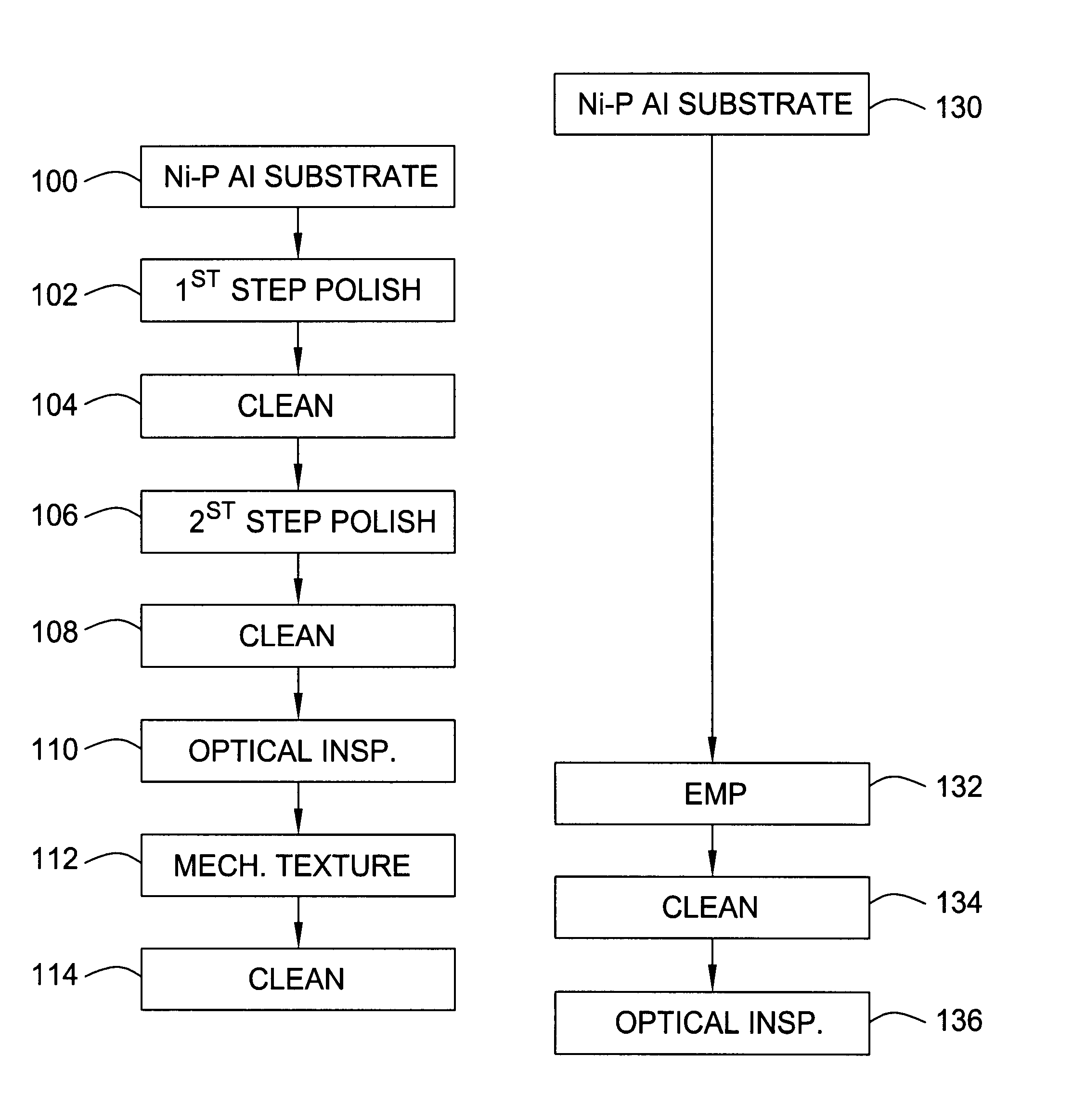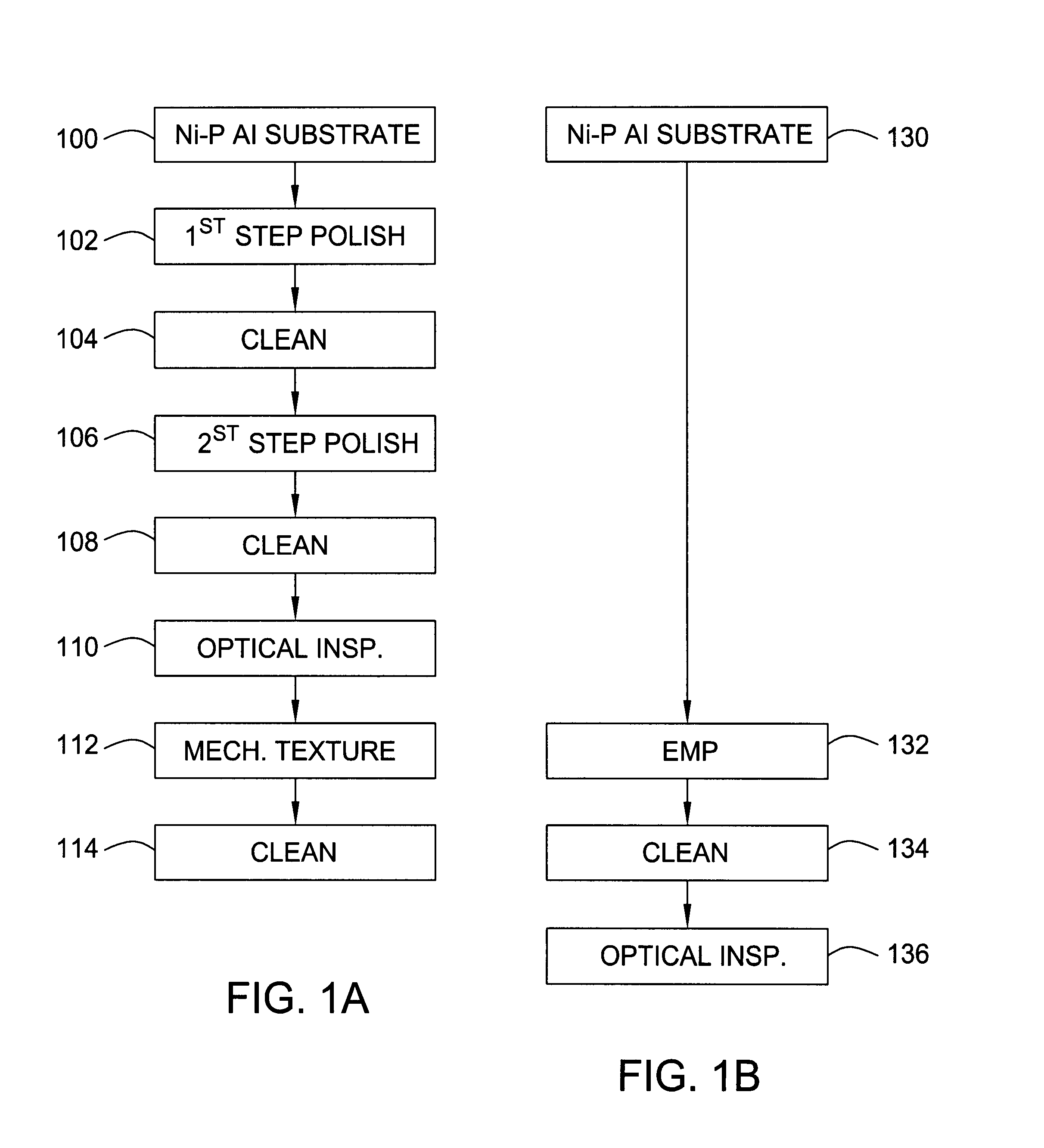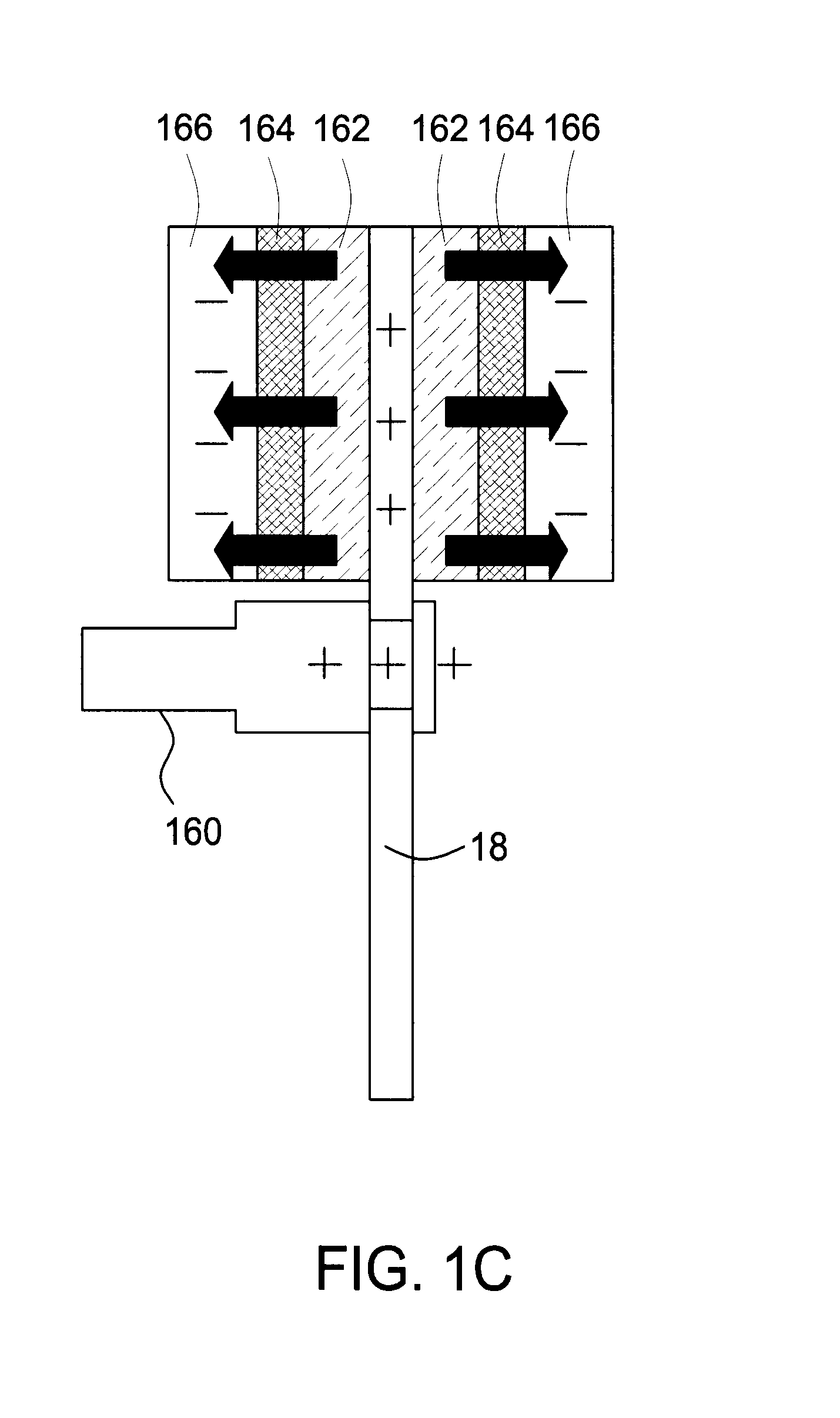Single-step electromechanical mechanical polishing on Ni-P plated discs
a technology of electromechanical mechanical and ni-p plated discs, which is applied in the direction of lapping machines, manufacturing tools, and base layer manufacturing, etc., can solve the problems of two polishing steps, large substrate cost of consumables for polishing, and relatively time-consuming, so as to reduce the number of process steps, shorten the processing time, and reduce the effect of the consumable s
- Summary
- Abstract
- Description
- Claims
- Application Information
AI Technical Summary
Benefits of technology
Problems solved by technology
Method used
Image
Examples
Embodiment Construction
[0027]FIG. 7 shows a plan view of a disc drive in which the present invention is useful. The disc drive 2 includes a base member 4 to which the internal components of the disc drive unit are mounted. The base member 4 couples to a seal 6 and a top cover 8 which forms a sealed environment or cavity within the housing so established for the critical parts of the disc drive 2. The disc drive 2 includes one or more discs 10 which are mounted for rotation on the spindle motor generally indicated at 12. A magnetic read-write head 14, one for each disc surface, is mounted to an actuator 16. In the example shown here, the actuator 16 is a rotary actuator which moves the heads to a desired position on the surface of the disc.
[0028]As is well known in this technology, it is essential to have smooth discs which typically comprise an aluminum substrate and a Ni—P layer which is circumferentially textured to enhance the magnetic recording properties of the recording layer.
[0029]FIGS. 1A and 1B c...
PUM
| Property | Measurement | Unit |
|---|---|---|
| Electrical conductor | aaaaa | aaaaa |
| Abrasive | aaaaa | aaaaa |
| Mechanical properties | aaaaa | aaaaa |
Abstract
Description
Claims
Application Information
 Login to View More
Login to View More - R&D
- Intellectual Property
- Life Sciences
- Materials
- Tech Scout
- Unparalleled Data Quality
- Higher Quality Content
- 60% Fewer Hallucinations
Browse by: Latest US Patents, China's latest patents, Technical Efficacy Thesaurus, Application Domain, Technology Topic, Popular Technical Reports.
© 2025 PatSnap. All rights reserved.Legal|Privacy policy|Modern Slavery Act Transparency Statement|Sitemap|About US| Contact US: help@patsnap.com



